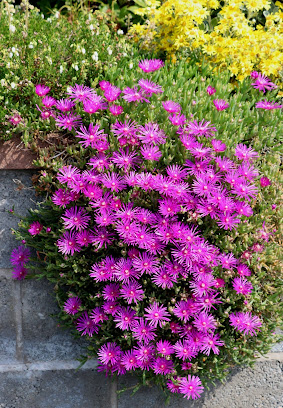HARVEST
SOME HEALTHY CROPS
Life under lockdown has been a
new way to see modern day living with plenty time to look at what we
are doing now compared to life before the pandemic. Folk living in
flats without a garden or an allotment have my full sympathy. However
those with gardens and allotments and plenty of time on their hands
are seeing a new way to live.
 |
| Summer garden produce |
As lockdown has closed so many
restaurants, shops, and pubs and it has not been so easy to go out
for a meal, or even get a takeaway. Junk food is harder to find and
that is no a bad thing. Folk are now growing more of their own fruit
and vegetables with their kids involved from seed sowing to planting
then on to harvesting. Getting them to do a bit of
weeding
is a harder task!!! The adults just love to see fresh fruit and
vegetables harvested and ready to eat in the same day, and totally
chemical free. Just a pity there may be a few small slugs on the
lettuce and the odd greenfly hiding in the kale, and you soon learn
how to find those wee maggots in the raspberries, and the odd
caterpillar in the cauliflower.
 |
| Blueberries |
We all have more time now to practise
new cooking skills especially as plenty magazines have numerous
recipes to try out. Folk are slowly learning
that a more healthy lifestyle has many benefits and as we grow our
own food we get plenty exercise, and allotment life is quite sociable
as we can still chatter from a distance over the garden fence. Plot
holders today are from all over the world including China,
Philippines, Japan so we learn how to grow exotic crops as well as
our tried and tested potatoes, cabbages, peas and turnips. People are
now looking at health benefits of fruit and vegetables as well as
taste. Most plot holders have no problem getting their five fruits
and vegetables a day, and many including myself are often on ten a
day if you include a good salad. Some of my favourite foods with
ample health benefits will include some of the following.
 |
| Spring rhubarb |
Black
fruits such as grapes, blackcurrants, chokeberry, blueberries and
saskatoons are all high in vitamin C and antioxidants, especially the
chokeberry, but as the fruit is a wee bit astringent it is best
cooked in compote, sauces or in jams and also makes a very tasty and
healthy red wine.
Rhubarb
was for a long time the poor man’s fruit, but now it is being
recognized as very
healthy,
being
high in anti-oxidants, and the minerals calcium and potassium. It is
also very tasty in tarts, crumbles, and stewed. Nearly every
allotment plot will have a clump of rhubarb.
Strawberries
are high in fibre, vitamins C and K and the minerals manganese and
potassium, and figs are similar but also have vitamin A and B and the
minerals zinc and copper. Using a range of varieties and polythene
tunnels to give an early crop I can enjoy strawberries from May till
October,
though last year the wet weather rotted most of my late crop. Fingers
crossed for this year.
 |
| Swiss chard |
Beetroot
and chard are very
high in antioxidants, magnesium, sodium, potassium and vitamin C.
The leaves and stems are rich in calcium, iron and the vitamins A and
C. The juice of beetroots is used by athletes as a health drink and
although traditionally we always pickled them, they can also be used
in risotto, chutney, spiced beetroot, and my favourite beetroot soup.
Tomatoes
contain vitamins A, C and E, some B vitamins and
vitamin K, and this year I will enjoy the cherry tomato Sungold and
the red cherry Super Sweet 100.
Peppers
are very high in Vitamin C, vitamin A, and most of the vitamin B
range, as well as the
minerals
potassium, magnesium and iron, and if you can get used to some of the
hotter varieties
research has indicated these
have an amazing range of health benefits including a healthy heart,
stomach, reduce migraines and joint pains, and help to prevent colds,
flu and some allergies.
Wee
jobs to do this week
 |
| Californian poppies |
Tidy up herbaceous
borders where early flowering bulbs (snowdrops, aconites, crocus
daffodils and tulips) planted for an early display between drifts of
plants have now finished and withered leaves can be removed. Oriental
poppies and peonies have now also finished and dying leaves can be
cut back. Any bare soil can be planted up with summer bedding plants
such as geraniums or annuals such as Californian poppies, godetia,
cornflower and Candytuft.
END
















































